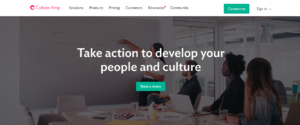A decade or more has passed since many authorities forecasted that outbound sales would become immaterial in the middle of the shift to inbound sales driven by improving rates of website conversion and optimizing digital marketing campaigns. The reports of outbound sales approaching demise were greatly overstated. Reported by Insight Sales Labs, outbound sales encompass 55% of revenue versus 27% for inbound in business to business sales. A business' success is reliant on outbound selling, especially for companies focused on enterprise sales.
This sales model can bring about a large amount of opportunities. Here are some tips to increase your revenue through outbound sales from Daniel West, the Head of Mid-Market Sales at ActZero Inc. has extensive experience in building out successful outbound strategies that have driven multiple millions in pipeline. With a record unmatched by his contemporaries, he boasts an incredible scorecard of 158% achievement of his sales KPIs, landing his company their largest outbound sale in their corporate history. He also has experience writing and publishing sales playbooks and onboarding guides for new sales recruits.
Step 1: Set specific criteria for targeting
Most companies decide to purchase lead lists based on specific criteria thinking this is best technique to achieve a high conversion rate from outbound sales. West suggest that eager sales agents will miss the mark based on this strategy alone and there is a high likelihood that they aren't targeting the right prospects.
It is critical before moving forward to define your ideal customer profile (ICP). As West says "Your ideal customer profiles are those whom you think will see value from your solution. And the best way to do this is through your current successful customers who have found value from your solution."
West continues "In the past, I've ran segmentation exercises that looked at closed won and closed lost opportunities to understand where we play and where we should not. When growing outbound, expectations setting is important - write out clear expectations to your team on where and where not to target."
Some of the key identifiers when figuring out where to target are company size, industry or vertical, revenue, location, other software, sales cycle, etc. Many CRMs like Hubspot or Salesforce can help you populate this information based on their extensive AI algorithms. After those features have been established, determine the win/loss percentage based on the above.
Mr West explains the importance of finding the right people: "When the ideal company has been identified, you should then use the data to understand who is your buyer. Are they technical, a champion, an influencer or something else that will require a unique approach.This helps determine the right people to contact in the organisation for future opportunities."
Step 2: Build an Outbound Cadence
After you have your list of ideal prospects, you will now want to build a cadence (or multiple dependent on your tiers of clients) that has multiple touchpoints with different types of outreach - Calling, Emailing and Social. One touchpoint is not enough; HubSpot recommends the number of touchpoints necessary to guarantee prospecting success is 8.
Mr West says "Setting up your team for success means they have access to direct dials, correct email information, the right tooling (sales enablement and sales intelligence) so that they only have to focus on executing on writing a good email, pitching value to the prospect from a script outline and personalising an email that have your established problem and solution statements."
Without a response from a prospect, the rest of this is meaningless so you should work with your team to build out a cadence that has a minimum of 8 touch points across a recommended 14-20 business days. Automated sequencing can be a company's best friend in this regard.
Persistence is important but don't spam. Your customer has a lot going on and probably has multiple calls and emails from many different vendors. West ends with "The importance of being different will help you stand out - personalise, do video outreach, use humour, be empathetic, solve a problem they have."
Step 3: Create Meaningful Metrics for Measurement
Sales leaders' priorities are to create consistent, predictable revenue. How you measure your outbound strategy is directly correlated with building consistent & predictable revenue. When defining a measurement for an outbound strategy, the metrics should be around driving revenue but it's unfair to your outbound SDR team to be responsible for closed revenue.
Mr West states that "there are certain leading indicators that you should be tracking that you can refine to create more consistency: Dial to Conversation Rate, Email Response Rate, Conversation to Meeting Scheduled, Meeting Scheduled to Meeting Held, Meeting Held to Opportunity. Understanding, refining, and optimising for these metrics will help your outbound strategy create sales velocity."
Outbound and inbound sales go hand in hand when building revenue. If you are effective in building out a thoughtful outbound strategy, you will gain a better understanding of the market and learn how to drive revenue in a consistent and predictable way.
Features
Associated Press
https://apnews.com/
news@features.com




